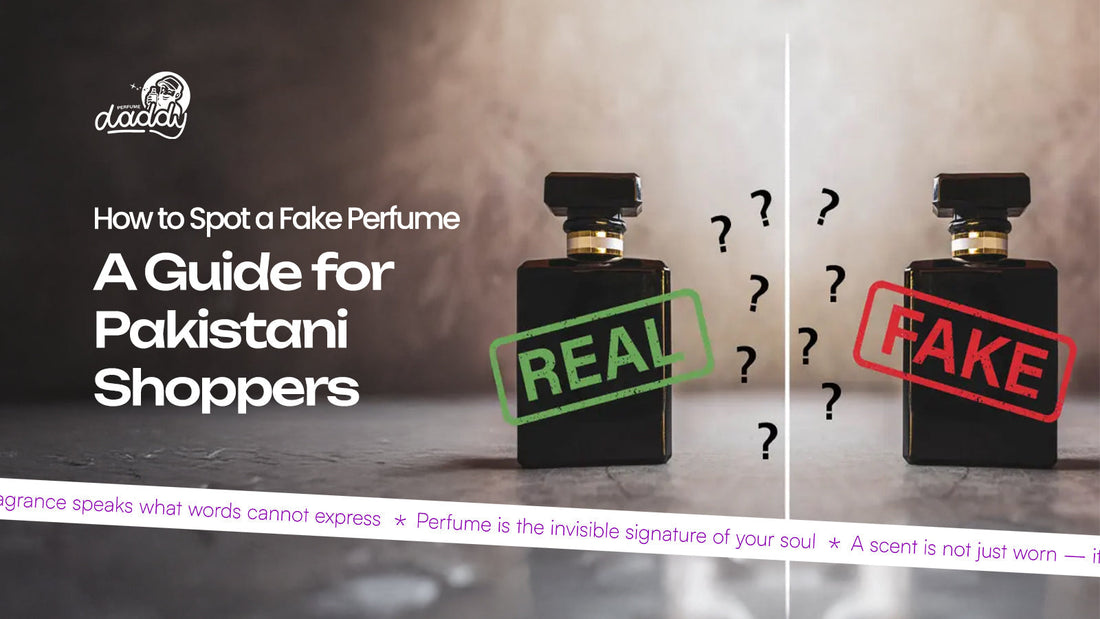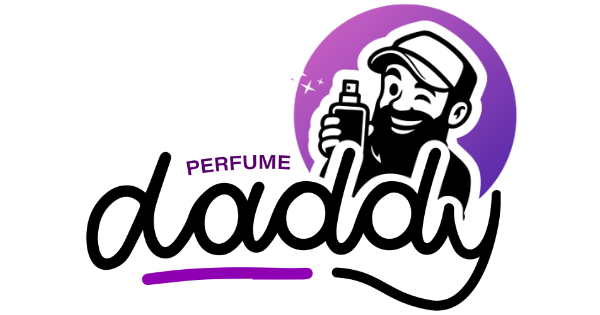
How to Spot a Fake Perfume: A Guide for Pakistani Shoppers
Fake perfumes are common in Pakistan, from bustling bazaars to major online stores, and a wrong purchase can result in wasted money and unpleasant smells. In this short guide, we’ll share 8 quick checks you can complete in minutes before making a purchase, along with more precise steps for the trickier signs.
Follow these checks and you’ll save money and can shop confidently, whether you’re buying from a mall in Lahore, an online store in Karachi, or a duty-free counter at the airport.
Table of Contents
- Why counterfeit perfumes are common in Pakistan
- Quick 8-point authenticity checklist
- Conclusion
- FAQs
Why counterfeit perfumes are common in Pakistan
Counterfeit perfumes spread because demand for big brands is high and price differences are attractive. Some sellers cut costs by copying bottles or refilling old ones with low-quality materials, while others import unofficial stock that skips quality controls.
For shoppers, the risk is twofold: you may pay for a brand but receive a weak, low-quality product, or you might buy something that irritates your skin. Knowing this market reality can help you spot red flags in a perfume quickly and choose sellers who offer authentic products and clear return policies, which protect your money.
Quick 8-point authenticity checklist
Store Price vs Market Price (If it’s too cheap, beware)
A very low price is the fastest red flag while purchasing a perfume. Major brands have relatively stable local price ranges. If a deal looks too good, question it. Sometimes sellers run promotions, but an extreme discount (for a brand-new, boxed perfume) often means a fake or repackaged stock.
A simple precaution is to check the usual price on the brand’s Pakistani site or on trusted online stores. If the seller won’t explain the discount or provide proof of authenticity, walk away.
Buy from trusted sellers
Where you buy matters as much as what you buy. Prefer brand counters in malls, official brand stores, or e-commerce sellers that are known for providing authentic fragrances and have transparent return policies. On marketplaces, look for seller badges, company registration, and recent customer photos and feedback.
If a seller refuses to share an invoice, batch details, or a return option, treat that as a warning. Buying from trusted sellers gives you recourse (refunds or replacements) and makes it far easier to confirm a product’s authenticity later.
Check Packaging Quality
Packaging is where most counterfeit items reveal their weaknesses. Authentic boxes have tight, clear cellophane, crisp printing, correct fonts, and no spelling errors. The color and texture of the box should match official images shared by the brand on their website, because faded colors, cheap cardboard, or misaligned printing are enough proof to tell that something might be a miss.
Also, check the inner seals, foil stamps, and fold lines; fakes often appear “off” up close. Compare the box with photos from the brand’s official site to get a better understanding.
Batch code and serial numbers
Every genuine perfume bottle typically has a batch code stamped on the box and bottle (usually on the base or label). This code ideally helps brands track production. If you find a code, check the box and bottle match, and, if possible, verify the code on the brand’s website or ask the seller for proof.
If there’s no code, or the numbers don’t match, that’s a red flag. It is also recommended to keep a photo of the code and request verification from the brand’s local customer service. It’s a quick step that can confirm authenticity and protect your purchase.
Bottle design and cap fit
The authentic bottle feels solid; ideally, these have weighty glass, clean seams, and a cap that fits snugly without wobbling. Brands invest in quality, ensuring that the logo will be sharp, the spray mechanism will be smooth, and the glass will sit flush on its base.
Fake bottles often use thinner glass, uneven seams, and loose caps that click oddly or leak. For better understanding, hold the bottle, test the spray once (away from your clothes), and if it feels cheap or the cap is loose, don’t buy.
Label, barcode & batch stickers
Check printing on the perfume and box closely, because most real labels have crisp type, accurate spelling, and matching language to the market version. The barcode and batch sticker should align with the box details and not appear as if they were slapped on.
If a barcode scans to an unrelated product or country, that’s a red flag. Scan the barcode with any barcode app or compare the label text to the brand’s product page, and remember that mismatches often mean unofficial or tampered stock, which you should try to avoid.
Smell & drydown test
A real perfume changes as it dries down. Ttop notes fade into a balanced middle notes and a smooth base. Fakes often have a sharp, chemical, or paint-like smell and may not soften into a natural drydown.
A simple home test is to spray on a paper strip and your skin (test on a small patch), wait 30–60 minutes, and notice if it develops naturally. If the scent collapses into a harsh solvent smell or disappears quickly, it’s likely not genuine.
What to do if you suspect a fake
If you think a perfume is fake, stop using it and keep the box, bottle, and receipt. Contact the seller as soon as possible to request a refund or replacement. If the seller refuses, reach out to the brand’s local customer service and report the case; you can also file a complaint or warn other buyers through reviews. Keeping proof helps, and taking action protects your money and other shoppers from the same problem.
Conclusion
Spotting fakes is mostly about conducting careful checks, including price, seller, packaging, bottle, and a quick smell test. Use the checklist before you make a purchase and keep receipts for added peace of mind. For guaranteed authenticity and easy returns, shop trusted stock at Perfume Daddy, where we offer only authentic perfumes.
FAQs
Q1. Can I trust online marketplaces?
Yes, but only with verified sellers. Check seller ratings, recent customer photos, and a clear return policy.
Q2. Does a lower price always mean fake?
Not always, but if the discount is too much, which is hard to believe, then you should be precocious.
Q3. How long after buying should I test the perfume?
Test within 24 hours.
Q4. Can I return a fake perfume and get my money back?
If you bought from a seller with a clear return policy and hold proof (invoice, photos, packaging), you should be able to request a refund or replacement.
Q5. Are tester bottles reliable and safe to buy?
Official store testers are fine to smell in-store, but buying “tester” bottles online is risky; these may be decants or unofficial stock. If you want to try a tester, ask the brand store for a sample or ask the seller to show you sealed, original packaging.







